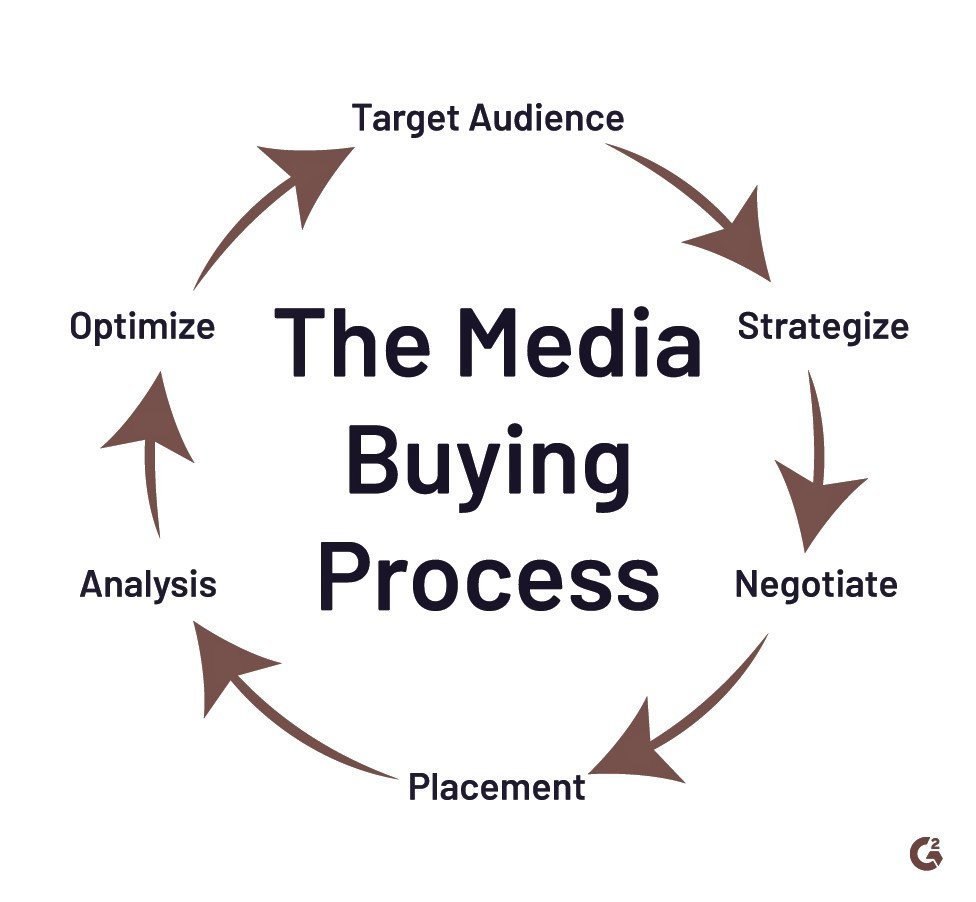Before a media buy happens, media buyers must perform research to optimize the return on investment on their client’s advertising budget. They will examine the target audience for a product and determine which venue or combination of venues will best serve it. For example, they may utilize demographic and geographic research related to the product to optimize their media buy. An advertiser’s budget also may dictate when an ad should run and where it should be placed. For example, bigger budgets can mean access to regional or national markets. Smaller budgets may mean local newspapers or radio. Once the right venue has been chosen, a media buyer will approach whoever owns the desired slot or space to negotiate a price, timing, and the rest of the deal.
Some important aspects of the media buying process include personal relationships between media buyers, media planners, and channel owners. Since airtime is finite, media buyers must foster relationships to get the most opportune placement and timing. Also, media buyers must keep abreast of changes in the marketplace. As the communications business changes, assumptions on what is the best venue for advertising must be challenged regularly. What was a great venue last year may no longer be the case this year, based on changes to a media publication’s reputation. Finally, media buyers should be able to create value for advertising clients by finding or creating deals.
Stage 1: Pre-Launch
This stage of media purchasing involves arranging the activities that must be done before the campaign’s debut. In this stage, the business investigates every facet of the following advertising. This step is further subdivided into many tasks:
- Get knowledge about the target market
The expected outcome of media buying is to reach out to more target audiences who can be consumers. However, if the ad is not effectively designed, it will be presented before the wrong leads, failing your campaign. Thus, first, identify your brand’s target demographic and then research their lives and concerns.
Keep track of which websites they visit, whose social media pages they use, if they click on prior advertising displayed on that particular media source, and so on. This extensive investigation will guarantee such losses are avoided in the future.
- Understand competitors strategy
When it comes to marketing, it is all about standing out from the crowd.
As a result, media buyers must conduct extensive research into what the various companies or rivals are doing in this sector or reach out to their target demographic.
Ask yourself several questions about the rival and attempt to obtain answers to every one of them.
- Make a media strategy
After the media buyers have completed their analysis of who the target audience is, their interests, and the competition, they develop a perfect plan for the media companies.
This step entails deciding whether to employ traditional or digital advertising tactics, which channels will be beneficial and so on.
- Create obvious goals
The firms’ aims must be explicit when selecting a media outlet to print the advertisement.
After launching this campaign, the company should be confident of what it wants to achieve. Thus, these achievements need to be made clear in the beginning.
- Negotiating the prices
The media procurement procedure aims to achieve a higher ROI in the future. As a result, media purchasers must negotiate prices with media firms exceptionally successfully.
As previously said, proposing a strategy to the media houses that may benefit both organizations would significantly reduce the cost.
To prevent continuously entering into discussions, the contract must always be long-term. Having strong media connections may aid in intensely negotiating and pricing and guarantee a solid profit.
Stage 2: Launching the campaign
This step entails the process of launching the campaign and subsequently tracking impressions. This stage is also divided into different phases of media buying:
- Media Delivery
Following the delivery of the advertising, the media buyer must monitor the reactions of the target audience. This entails addressing a few questions, such as:
- Are there any follow-up responses from the audience?
- How do these audiences interact with the media?
- What impressions does the advertisement create?
- Is the audience not enjoying it?
- Track and change
There may be times when the strategy does not follow the path that the business anticipated. As a result, the launched campaign must be tracked.
If the audience does not like it or wants modifications, the company must immediately alter the movement.
Stage 3: Post-launch
This step ultimately comprises analyzing the campaign’s performance. Before beginning each new campaign, ask if the previous campaign had any flaws.
What was the audience’s reaction to the advertisement? And how much were the costs and subsequently ROI at the end of the campaign?
Analyze the Effectiveness of the Campaign
Collect as much data as possible, and review statistics and granular reports to see the strong and weak points of the campaign.

Analyze the effectiveness of the media space and whether it generated revenues that were expected. Check how the audience interacted with the product, and assess consumer behavior. Evaluate the return on investment, and mark errors that have been made to avoid them in future advertising campaigns.
Collect Data
When you have all the data, it is time to use it. In digital advertising, data is used to build algorithms that help optimize advertising campaigns and provide better targeting. Data is a marketer’s best friend, so look at it carefully. Aggregate data, and look for major and minor trends.
Draw Insights
Don’t look at singular points, especially when they change the direction. Search for relationships among variables or correlation and dependence patterns that help understand the logic.
Finally, look at the data from different angles. Invite others to examine the data and discuss your impressions.